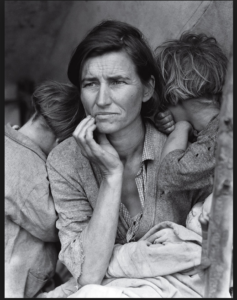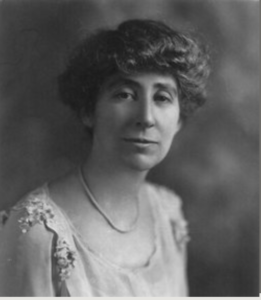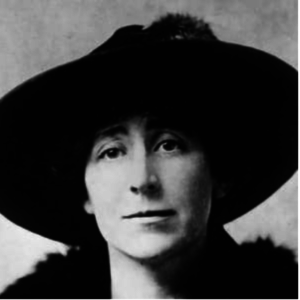I hope this is the last time I blather about The Compleat Rankin Book, which continues to nip at my heels. I’m ready to move on to Volume 2.
I’ve received two emails asking me which Rankin families are included in the book. Also, one blog commenter speculated that her line is not in it. In response, here are some short blurbs for the lines in the book to let you know which Rankins are included and generally who they are …
Robert and Margaret (“Peggy”) Berry Rankin of Virginia, Kentucky, Alabama, Texas, and Louisiana. Lt. Robert and his brother William were both Revolutionary soldiers. Their fabulous individual war stories are covered in some detail. Lt. Robert died in Louisiana, but is buried in the Texas State Cemetery in Austin … or so the Cemetery believes, despite some hilarious evidence to the contrary. Lt. Robert’s brother William died in Mason County, Kentucky, as did his brother John. The three brothers (there may be others) left large families — twenty-eight children among them. Their descendants should be legion. Their parents are not proved. The next article I post will share my opinion about their family of origin, assuming I am able to formulate one that isn’t just rank speculation.
Joseph and Rebecca Rankin (“J&R”) of New Castle County, Delaware. Their sons John and William went to Guilford County, North Carolina. Their descendants are well-documented in a book by Rev. Samuel Meek Rankin.[1] J&R’s son James went to Washington County, Pennsylvania. Only J&R’s sons Joseph (Jr.) and Lt. Thomas Rankin stayed in New Castle. J&R’s probable son Robert is a mystery. Their daughter Ann lived with her brother Joseph (Jr.) and apparently never married. No, Samuel Rankin who married Eleanor (“Ellen”) Alexander was not J&R’s son, despite Rev. Rankin’s speculation on that issue.
Four of J&R’s sons fought in the Revolution, assuming Rev. Rankin is correct about John and William fighting at Guilford Court House. His family tradition that they fought in that battle accords with the fact that every able-bodied patriot for miles around reportedly participated. Ostensibly a British victory, it was nevertheless a major blow to Cornwallis in the Southern Campaign. If you haven’t been to the Guilford Courthouse National Park in Greensboro, it is worth a trip.
Robert and Rebecca Rankin (“R&R”) of Guilford County, North Carolina. Their son Robert died there in 1795, leaving one son named George and four daughters. R&R’s son George married Lydia Steele and died in Rowan County (from which Guilford was created) in 1760. George left two young sons, John and Robert, who left Guilford for Kentucky and Tennessee, respectively. R&R also had at least three daughters: Ann Rankin Denny (proved), Rebecca Rankin Boyd (probable) and Margaret Rankin Braly/Brawley (also probable).
R&R’s line includes at least one Revolutionary War soldier and the famous Rev. John Rankin of the Shaker colony in Logan County, Kentucky. Shaker Rev. John was kind enough to pen an autobiography identifying where the family lived before they came to the colonies. That is a rare case of certainty about a Rankin family’s specific Ulster location. Otherwise, Rev. John’s autobiography is a piece of work. I challenge you to get through it.[2]
David and Margaret Rankin of Iredell County, North Carolina. David may have been a son of Robert and Rebecca Rankin of Guilford. Y-DNA tests allow that possibility, although there seems to be no evidence in the paper records. David and Margaret’s son James died at the Battle of Ramsour’s Mill in 1780, leaving four underage children in Lincoln County. Their son Robert survived Ramsour’s and moved to Gibson County, Tennessee, where he filed a Revolutionary War pension application.
Robert had proved sons David and Denny Rankin, both of whom remained in Iredell and married McGin sisters. Robert also had a daughter Margaret Rankin Finley, who appeared with him in Gibson County in a deed of gift. Descendants of Robert and his wife, probably Jean Denny of Guilford County, still live in Iredell County.
John Rankin of Lancaster County, Pennsylvania. He died there in 1749, leaving a will naming a wife Margaret, two sons, and eight daughters.[3] His son Richard went to Augusta County, Virginia. Son Thomas also went to Augusta, then moved on to East Tennessee. Thomas was the patriarch of the line of Rankins celebrated in the famous Mt. Horeb Presbyterian Church Cemetery tablet in Jefferson County, Tennessee. This family has also been thoroughly documented, especially by a 19th- century descendant named Richard Duffield Rankin. One descendant is Rev. John Rankin, the famous abolitionist whose home in Ripley, Ohio was a waystation on the underground railroad. He deserves an article of his own. Another fairly well-known descendant is John Knox Rankin, who was among those who faced Quantrill’s Raiders in Lawrence, Kansas in 1863. Both Rev. John and John Knox Rankin are high on my to-do list.
Adam and Mary Steele Alexander Rankin of Lancaster County, Pennsylvania. Adam died there in 1747, leaving a daughter and three sons. This is perhaps the best known of all Rankin families. Adam and Mary’s children, possibly not in birth order, were James, Esther Rankin Dunwoody, William, and Jeremiah. James married Jean/Jane Campbell and lived in a famous location in Montgomery Township, Franklin County called “the Corner.” Tales of “mint julip” (moonshine?), evil groundhogs, and a haunted house in the Corner abound. Story to follow. James and Jean had four sons and two daughters. David, William, and Jeremiah remained in Franklin. The fourth son, James Jr., is elusive.
Adam and Mary’s son William married Mary Huston and had seven sons and a daughter, Betsy Rankin Robison. Four of their sons — William Jr., James, Jeremiah, and John — went to Centre County, Pennsylvania, where they owned land devised by their father. William and Mary’s son Adam, their eldest, became a doctor and moved to Kentucky. Son Archibald married Agnes Long and remained in Franklin County. Son David married Frances Campbell and wound up in Des Moines County, Iowa.
Adam and Mary’s son Jeremiah (wife Rhoda Craig) died in a mill accident in Franklin County, Pennsylvania in 1760. Jeremiah seems to be totally absent from Pennsylvania records other than his father’s will. His four sons went to Kentucky.
Famous descendants of Adam and Mary include Confederate Brigadier General Adam Rankin “Stovepipe” Johnson, who was the father and grandfather of two major league baseball players. Stovepipe is also buried in the Texas State Cemetery in Austin. He is from the line of William and Mary Huston Rankin through their Kentucky son Dr. Adam. Another famous descendant of Adam and Mary is Rev. Adam Rankin of Lexington, Kentucky, a son of Jeremiah and Rhoda. Rev. Adam was well-known among Presbyterians for his obsession with the so-called “Psalmody controversy.”
Samuel and Eleanor (“Ellen”) Alexander Rankin of Lincoln/Gaston Co., NC. His nickname was “Old One-Eyed Sam,” according to a descendant who grew up across the Catawba River from Sam’s home in Lincoln. I haven’t found many good stories about this family, other than their grandson Samuel who was indentured as a thirteen-year-old. Indentured servitude was fairly uncommon in a family as prominent and wealthy as the Lincoln County Rankins. Sam’s two brothers escaped that fate, making me suspect that young Sam was a handful. He married Mary Frances Estes in Tishomingo County, Mississippi and wound up in Jefferson County, Arkansas.
Sam and Mary had eight sons and two daughters. Four of their sons were Civil War soldiers. Two joined the Confederate army and two fought for the Union, probably after having been first captured as Confederate soldiers.[4] One of Sam and Mary’s sons, my ancestor John Allen Rankin, deserted the Army of the Confederacy after a terrible loss at the Battle of Champion Hill east of Vicksburg. Private John Allen’s war story intersects with a good love story about meeting his future wife, Amanda Lindsey. One of John Allen and Amanda’s great-grandchildren still flies a Confederate battle flag on his front porch, citing his “proud southern heritage” as justification. He might not know about his ancestor’s desertion. My cousin and I fly different flags.
Robert Rankin of Rutherford County, North Carolina and Caldwell County, Kentucky. Robert married Mary Witherow in North Carolina. The couple apparently divorced, which was evidently rare at that time. Alternatively, Robert may have just walked away. He left North Carolina while Mary W. Rankin was still alive. He eventually remarried. I haven’t found any fun stories about his family, although I haven’t looked very hard. Their descendant Francis Gill is the expert on Rutherford Robert’s line. The Compleat Book contains entries from several family Bibles that Francis kindly shared. If this is your crowd, the Bibles provide good information. The book also has an article about Robert’s son Jesse, who married Cynthia Sellers and went to Gibson County, Tennessee. He has been confused with another Jesse Rankin, a son of Shaker Rev. John Rankin.
William and Abigail Rankin of Washington County, Pennsylvania. William was a son of David and Jeanette McCormick Rankin of Frederick County, Virginia. William and his brother David were easy to track; their brother Hugh, not so much. That translates to the fact that I have unfinished business with this line. William and his wife Abigail left a passel of children, many of whom remained in Washington County. Their son David left Washington County for Kentucky. One son, Zachariah, died of hydrophobia after being bitten by a rabid wolf. The most charming stories about this family concern the detailed list of Zachariah’s clothing in his inventory and the amount of whiskey purchased for his Washington County estate sale. Who says probate records are dry and boring? You can bet that estate sale was neither.
William Jr. and Jane Rankin of Fayette County, Pennsylvania. This is an interesting line in early Pennsylvania which also deserves more research. Some of their line remained in Fayette County, where the cemeteries are awash with their descendants. Some went “west,” which often meant “the Ohio Country.” That referred to land roughly west of the Appalachian Mountains and north of the Ohio River.[5] One of their sons who went “west” had accumulated an overwhelming amount of debt from lenders in at least two states, leaving mind-boggling deeds about it. What, I wonder, did he spend all that money on? If I could suss it out, it would surely be a good story.
Jeanette Pickering Rankin and her sister Edna Rankin McKinnon. It isn’t easy finding famous women in family history research. Jeanette is known for her terms in the U.S. House of Representatives, where she was the first female. She is famous (or infamous) for her votes against entering both World Wars. She was a woman of integrity and courage, no matter what one thinks about those votes. She also did considerable work obtaining the vote for women in her home state of Montana. In her eighties, Jeanette led an anti-Vietnam war march in D.C. The marchers dubbed themselves the “Jeanette Rankin Brigade.” Her little sister Edna is famous for her work in Planned Parenthood. If those two Rankin women had been around at the right time, there would undoubtedly have been some rousing good speeches in favor of the Equal Rights Amendment.
Now … I need to see if I have sufficient evidence to formulate a semi-cogent opinion about the parents of Lt. Robert Rankin and his brothers William and John. If not, there are plenty of other genealogical mysteries and interesting Rankins waiting in the wings.
See you on down the road.
Robin
[1] Rev. S. M. Rankin, The Rankin and Wharton Families and Their Genealogy (Greensboro, NC: J. J. Stone & Co., printers and binders, 1931, reprint by Higginson Book Co., Salem, MA).
[2] John Rankin, “Auto-biography of John Rankin, Sen.” (South Union, Ky., 1845), transcribed in Harvey L. Eads, ed., History of the South Union Shaker Colony from 1804 to 1836 (South Union, Ky., 1870). You can obtain a copy of Ead’s transcript from the Special Collections Library, Western Kentucky University, Bowling Green, Kentucky (WKU), where it is designated “Shaker Record A.”
[3] More accurately, John Rankins’s 1749 will named six daughters and two sons-in-law.
[4] Captured Confederates were sometimes allowed to play a “get out of jail free” card by renouncing the Confederacy and joining the Union Army. Usually, the ex-prisoner served in the west, where he was unlikely to be shooting at members of his family.
[5] The “Ohio Country” consisted roughly of modern-day Ohio, eastern Indiana, western Pennsylvania, and northwestern West Virginia.





